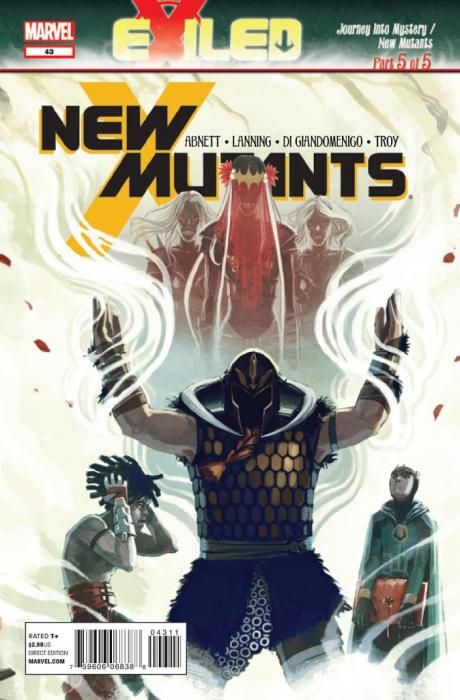"New Mutants" #43 by Kieron Gillen, Dan Abnett, Andy Lanning and Carmine Di Giandomenico delivers the conclusion to "Exiled," the "New Mutants"/"Journey into Mystery" crossover that -- if we're being honest -- has been more about the latter series than the former.
Don't get me wrong, there are repercussions for the New Mutants following the events of this story (mostly built around the shared supporting cast), but the ties between the New Mutants and Asgardian heritage are largely historical and that alone seems to justify their presence. Accident alone pulled them into the story and that's all that keeps them there until the end.
Taken as a "Journey into Mystery" story, however, it's replete with the fun scripting and interesting ideas that make the series such a good read. The Disir's origin finally stands resolved and a new chapter in their lives begins. As ever, it's the precocious dialogue and actions of Kid Loki that drive the story, although Moonstar also plays a pivotal role in the end.
For a book with a fairly complex plot, it perhaps doesn't help that the art struggles a little with clarity. It's great to see one artist drawing an entire crossover, but Di Giandomenico's lines are thick, his panels crowded and because the colorist fail to rein in those excesses, there's often a sense that it's difficult to see what's going on. There's also an odd lack of backgrounds throughout much of the issue (which the colorist can only cover so far) so one can only guess how crowded it'd look had they been included.
Still, as a conclusion to the story, it works with pay-off that justifies its presence to both "New Mutants" and "Journey into Mystery" readers (as well as those who have been following the story of the Disir since Gillen introduced them way back when.) Sigurd's fate is either cruel or just, depending on your perspective, and suitably mythic in scope. More interesting, however, is the change in Mephisto's relationship with Loki and Magma.
And, of course, the wider point about the Disir: how myths and legends have historically treated women rather badly. It's interesting that Sigurd, the notional hero, and the Disir, the apparent villains, have switched roles over the course of five issues. The exploration of this idea makes the story deeper than it first appears and now that it's over it'll be interesting to re-read it all with knowledge of the ending intact and see how its points are made.

